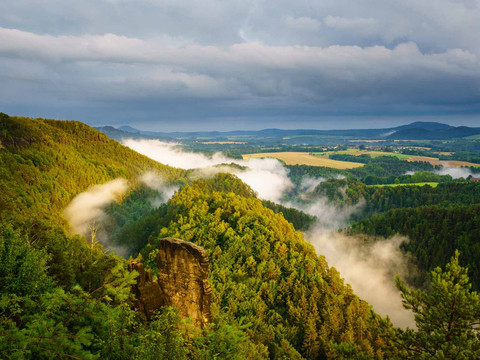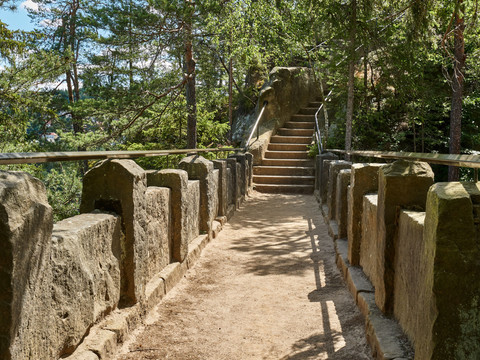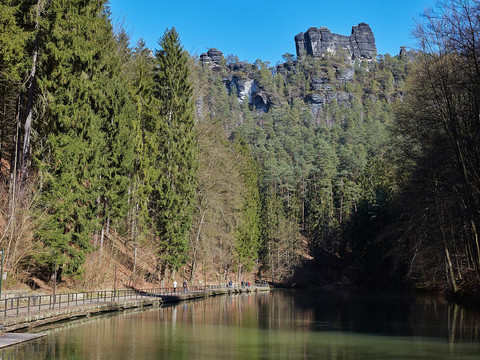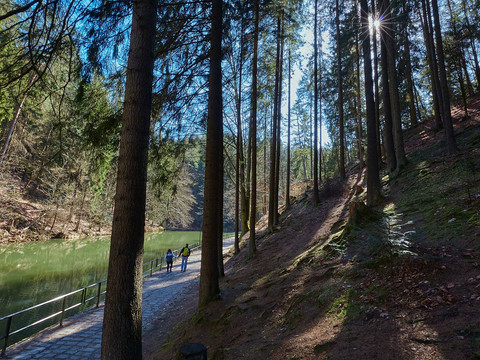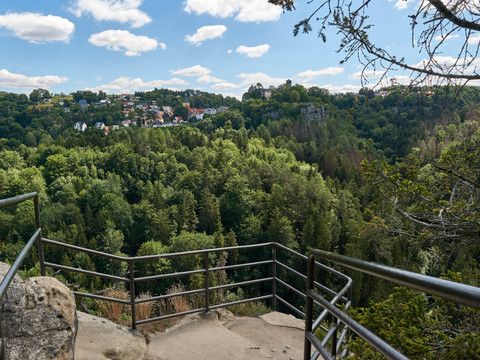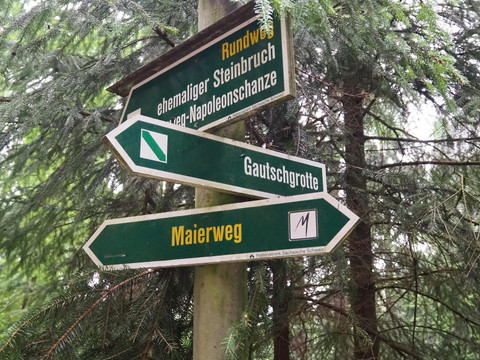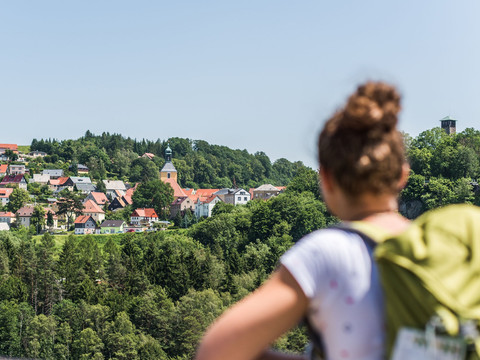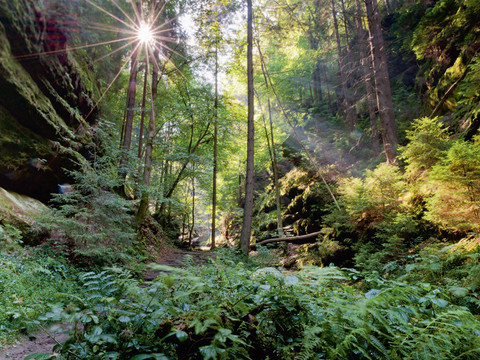Kurort Rathen - Amselgrund - Felsenbühne Rathen - Amselsee - Amselfall - Rathewalde - Querweg - Hockstein car park - Hockstein - Wolfsschlucht - Polenztal - "Schindergraben" nature trail - Hohnstein - Brand-Aussicht - Tiefer Grund - Porschdorf
In the footsteps of Caspar David Friedrich - Part 2: Along the Malerweg trail from the spa town of Rathen via Hohnstein and the Polenztal valley to Porschdorf
Short facts
- start: Kurort Rathen
- destination: Bad Schandau
- difficult
- 15,75 km
- 5 hours 25 minutes
- 541 m
- 347 m
- 121 m
Tour dashboard
Pavings
- Street (3%)
- Asphalt Coating (17%)
- Crushed Rock (15%)
- Hiking Trail (22%)
- Path (44%)
Weather
General information
- Stop at an Inn
Kurort Rathen
Bad Schandau
In the spa town of Rathen, the trail leads into the Amselgrund. It passes the staircase to the Rathen rock theatre, Amselsee lake, Amselfalll and on to Rathewalde. Behind the village, the path runs parallel to the road towards the Hockstein car park. Hohnstein can already be seen on the other side of the Polenztal valley from the Hockstein car park. To get there, take the steps down through the narrow Wolfsschlucht gorge, a little way along the Polenz and back up the wild and romantic Schindergraben. After a visit to Hohnstein Castle, the route heads back downhill to the Bärengarten. All that remains of the former zoo are photogenic remains of the walls. The forest hiking trail continues along the Halbenweg and the Räumichtweg towards the Brandaussicht. The view from the Brand massif over the Polenztal valley is one of the most famous in the region. From the Brand, we descend over 800 steps into the Tiefen Grund. There we leave the Malerweg for today and follow the Lachsbach stream to the Elbe towards Bad Schandau.
In July 1800, Caspar David Friedrich set off on a hike lasting several days in Saxon Switzerland, more precisely in the region around Hohnstein. Friedrich started his tour in Dresden and presumably spent the night in Lohmen before continuing on his way towards Hohnstein. On his way, he passed the Hocksteinschänke inn and hiked down into the Polenztal valley, where he turned right at the old Polenzbrücke bridge and followed the course of the stream. The valley became increasingly wild and inaccessible here, but this did not deter Friedrich from drawing his first sandstone formations. He recorded the date 7 July 1800 on these drawings.
The following day, he made a sketch of Hohnstein Castle and explored the Schindergraben, where he drew the "Ruine im Schinderloch", a remarkable breach in the wall that can still be seen today. On 9 July, Friedrich set off for the surroundings of Hohnstein and it can be assumed that he also visited the Hockstein and the Brand viewpoint. His hike finally ended on 10 July in the fishing village of Prossen. Where the Lachsbach stream flows into the Elbe, the Lilienstein reveals a rather unknown side. He captured the dominant Lilienstein and Königstein Fortress in a sketch he made
During these four days, Friedrich collected numerous interesting motifs. The nature and landscape around Hohnstein has retained much of its original beauty to this day.
Arrival by public transport:
S-Bahn S1 (Meißen - Schöna) to Kurort Rathen
then take the ferry to the other side of the Elbe (this ferry is not included in the mobile guest card!)
Departure by public transport:
S-Bahn S1 from Bad Schandau National Park railway station
